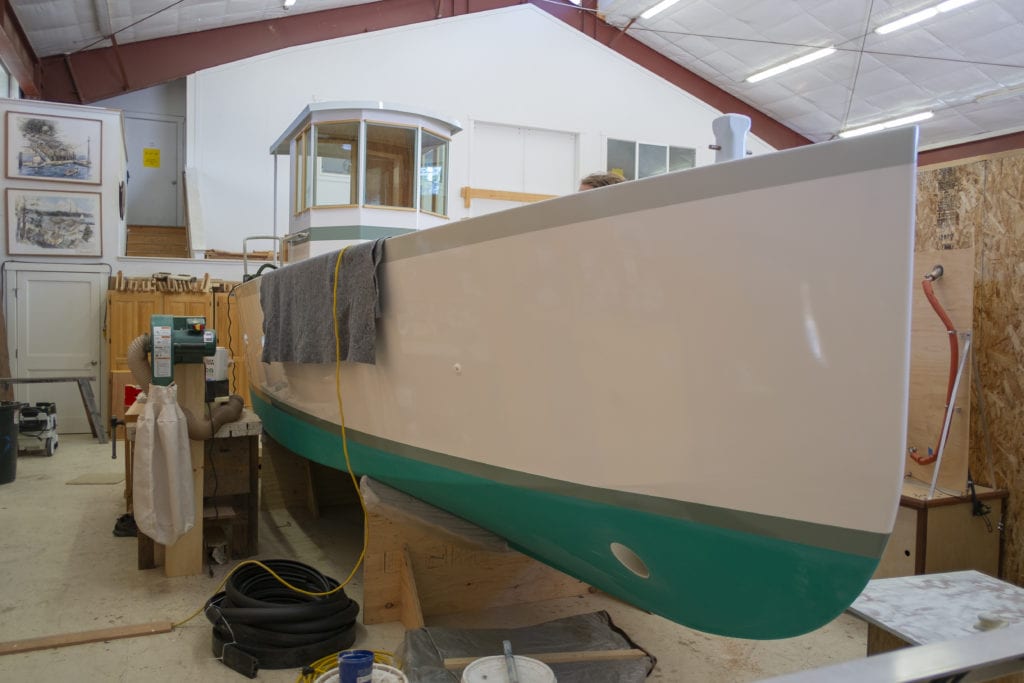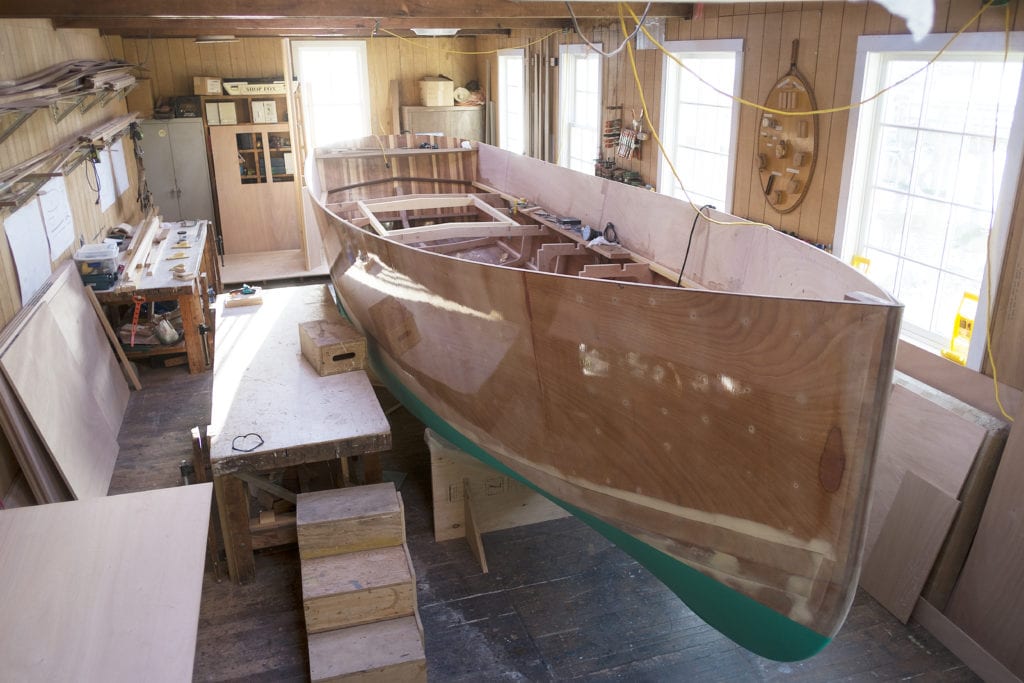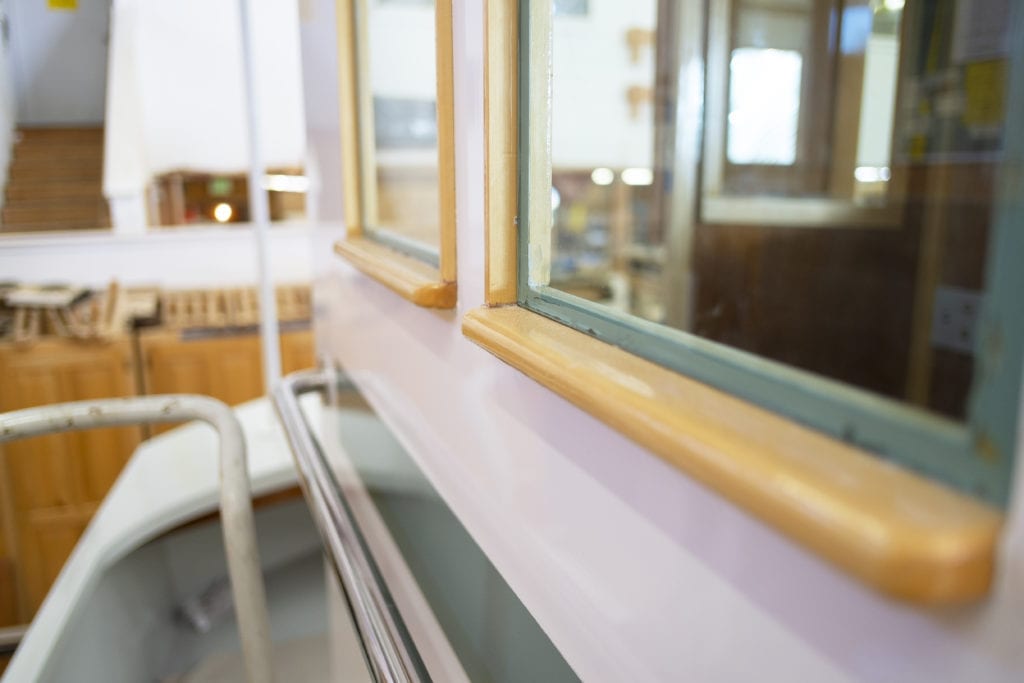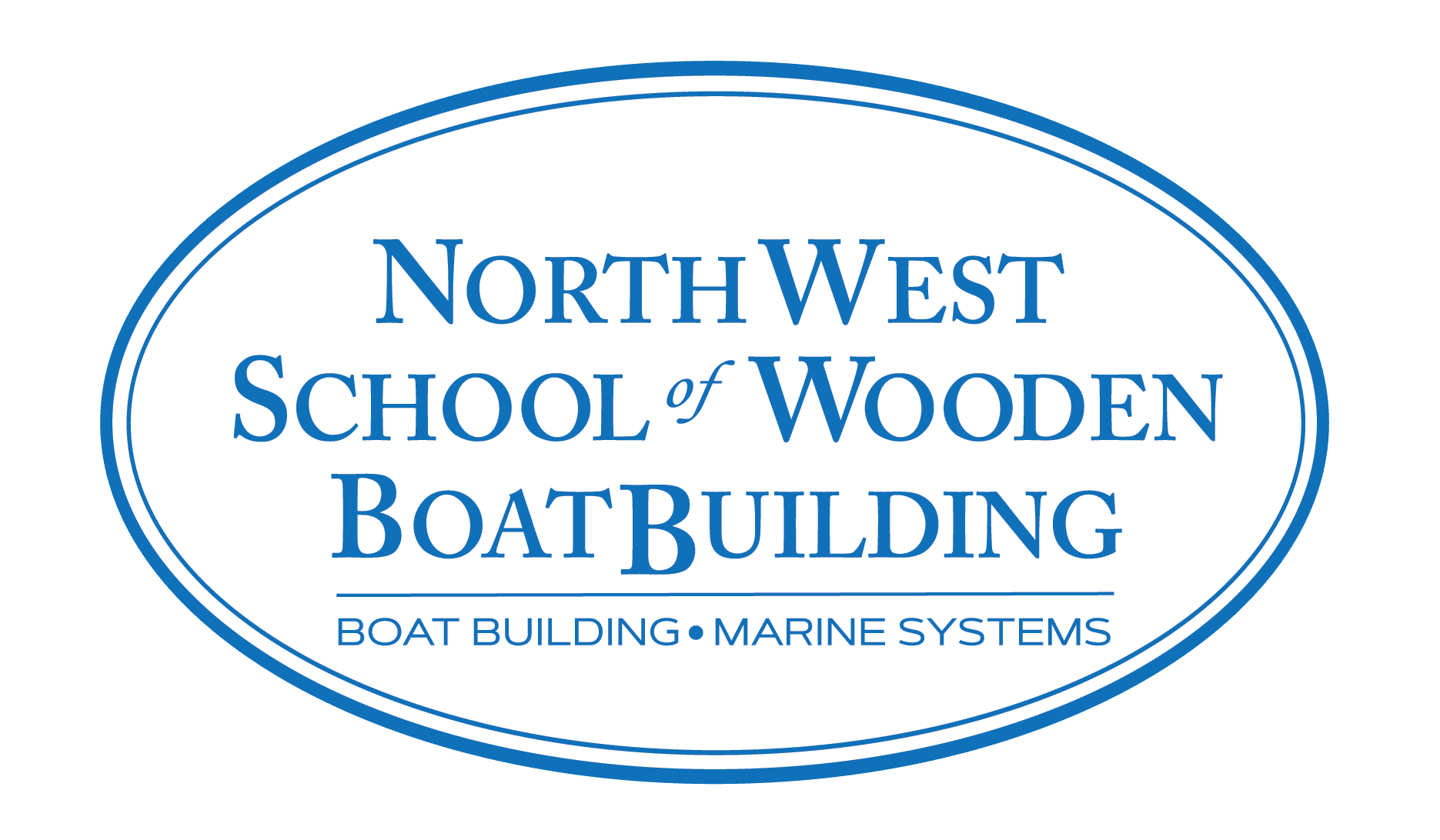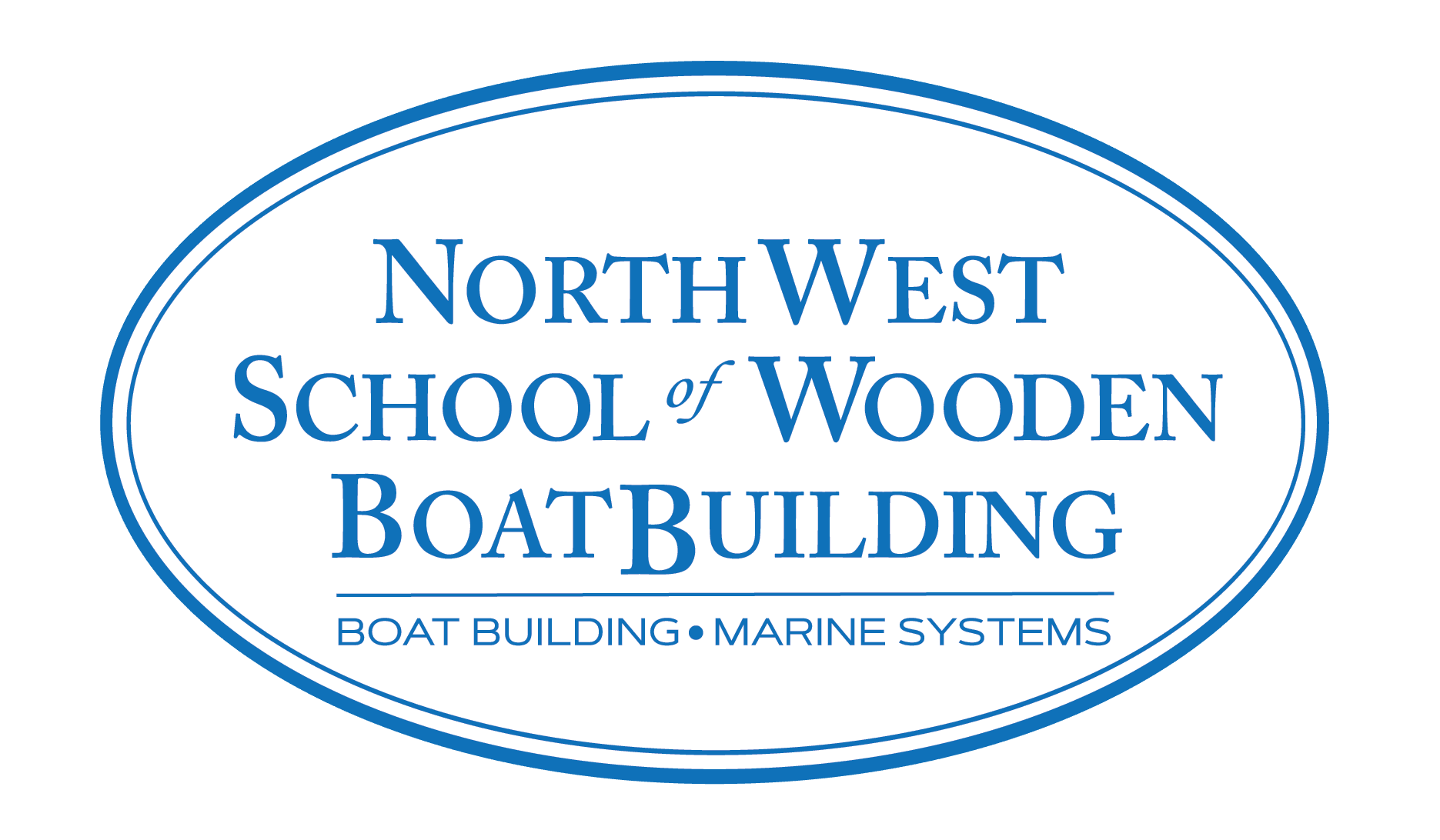There is an unusual boat taking shape in the Hammond Shop at the Northwest School of Wooden Boatbuilding. At An unusual boat recently completed construction in the Hammond Shop at the Northwest School of Wooden Boatbuilding. At first glance, it resembles a traditional Northwest troller, but the beam is unusually narrow, and it’s fitted with a 500 gallon wastewater tank amidships. Inside are heavy-duty shelves for the 48V lithium ion batteries which will drive the propulsion system. A separate set of 12V batteries are located forward to operate a bow thruster. The finished boat will have flexible, monocrystalline solar panels to help keep those batteries charged when the boat is underway.
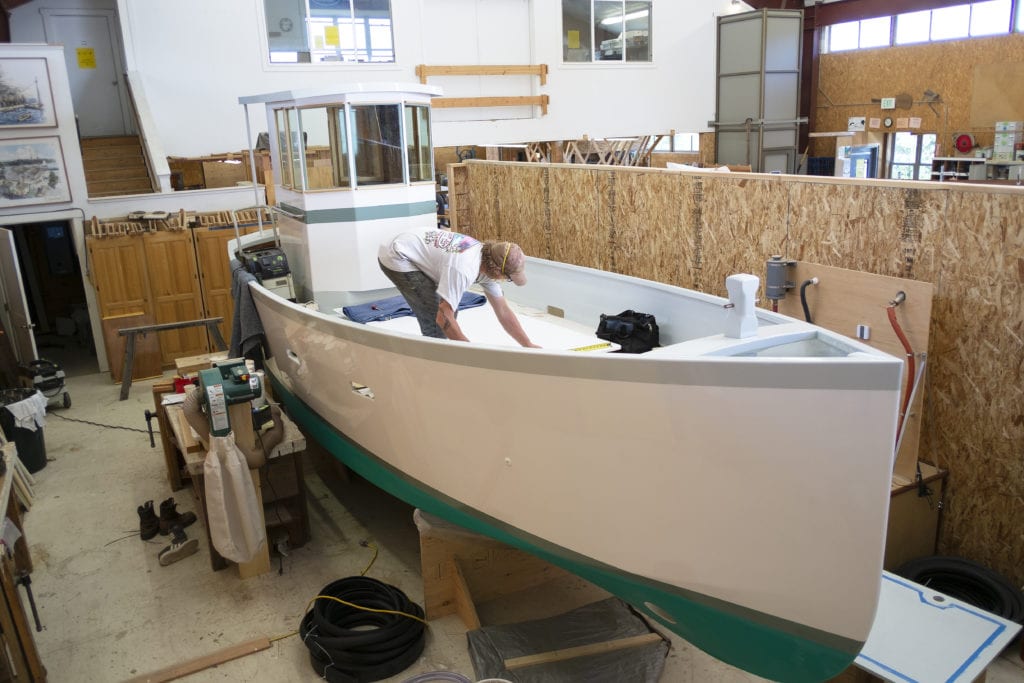
Meet Clean Bay, a 25’ zero-emissions workboat that will provide free pump-outs to boaters in Port Ludlow Bay.
The project came together through a collaboration with local marine businesses, private donors, and state agencies aligned around a common goal of promoting environmental stewardship – from its zero-emission propulsion system to its role in keeping waterways clean of wastewater (read more here). Clean Bay has already been recognized by the state’s Maritime Blue Initiative for modeling effective use of zero-emissions systems for workboats.
NWSWB is unique among top-tier boatbuilding schools for the range and number of builds it undertakes each year – students learn side-by-side with instructors as they together work out the details for that particular day sailor, skiff, motor launch, or work boat. With the Clean Bay project instructors built to a new design and worked with new technologies. Additionally, they collaborated with designers and met the task of problem solving, which is integral to boatbuilding and custom systems design. “We are teaching and deploying state-of-the-art systems and propulsion technology for which, in many cases, standards have yet to be written,” says Marine Systems Lead Instructor Kevin Ritz.
“We’re not just building boats,” says Contemporary Boatbuilding Instructor Bruce Blatchley. “Our main product is education.”
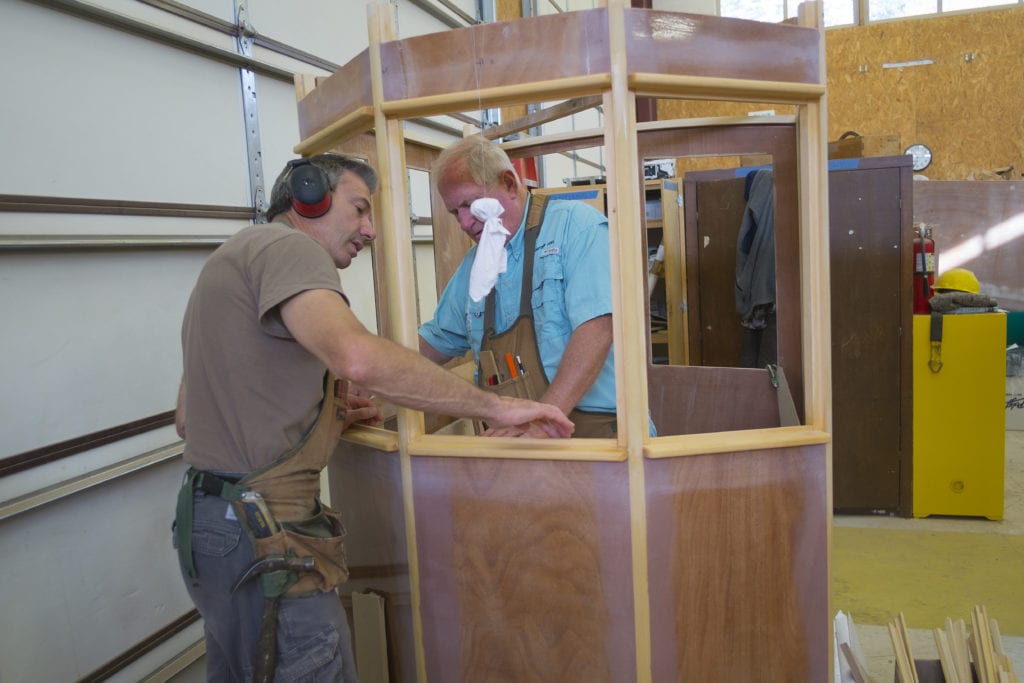
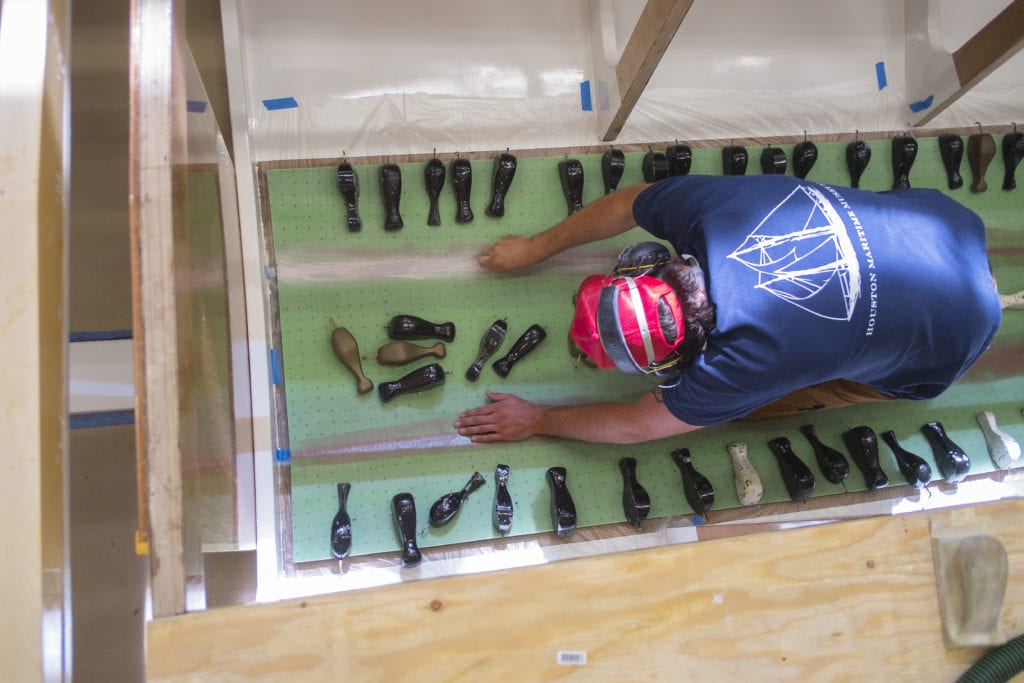
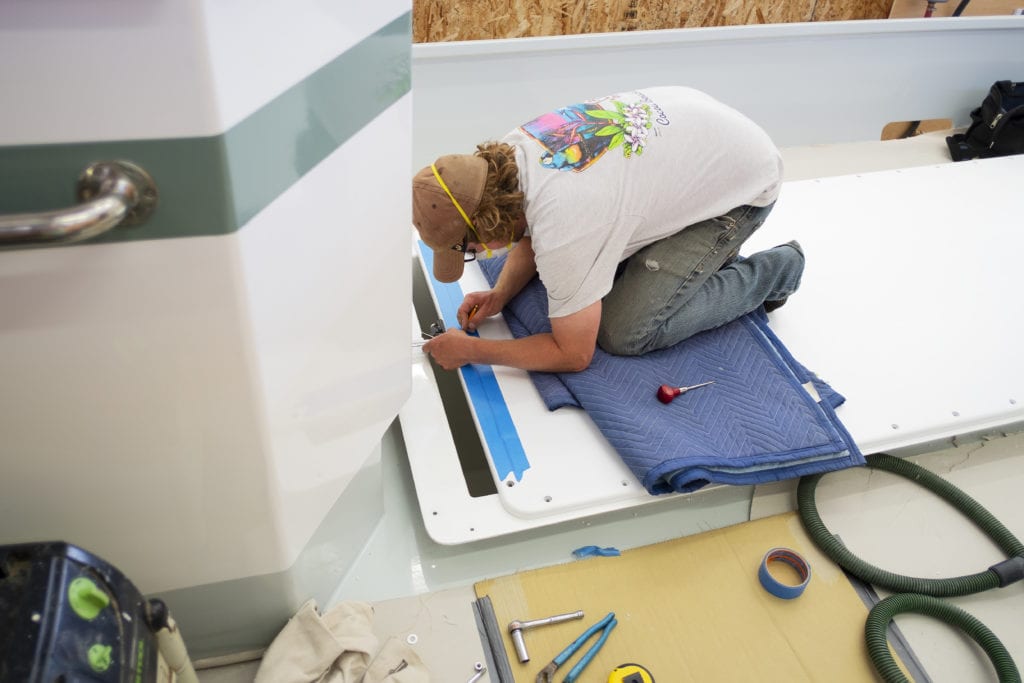
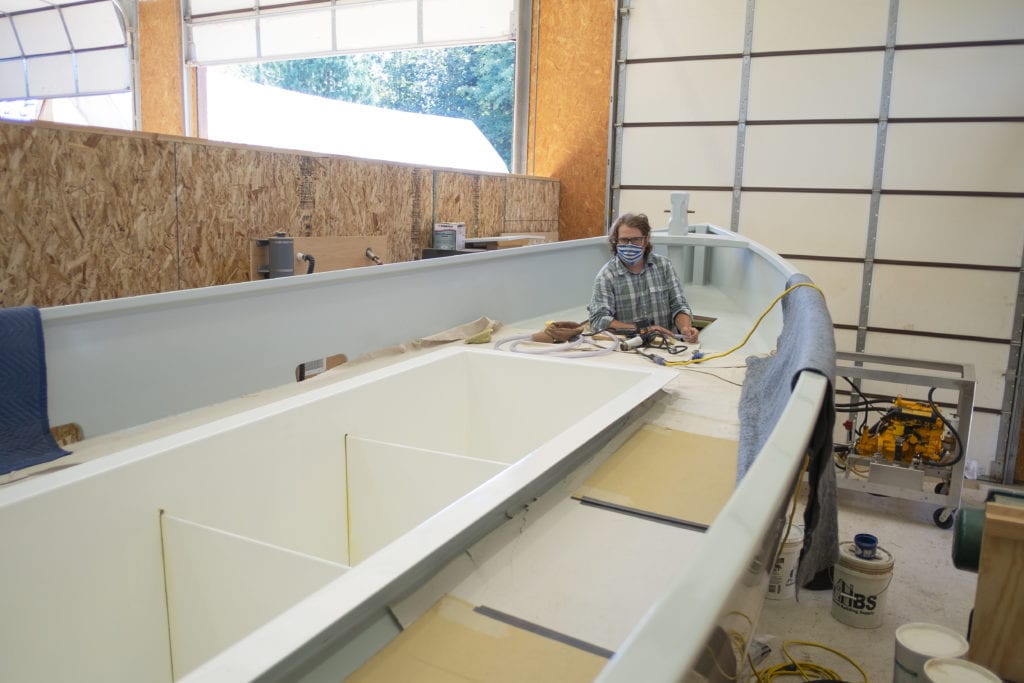
“Building Clean Bay has given students experience with laminating, strip-planking, and cold-molded construction; vacuum infusion; foam core construction; working with CNC production; millwork; and joinery, says Bruce. Students in the Marine Systems program were able to experience custom systems design and installation, load calculations for propulsion and energy storage, sizing of solar modules, and impressed current cathodic protection. “Working closely with designers and composite specialists in town gives our students firsthand knowledge of new technologies,” says Bruce. “It also gives employers a chance to see the aptitude and motivation to learn our students bring to their work.”
The bulk of “Clean Bay’s” construction was completed in the Fall of 2020. Students in the Contemporary Boatbuilding class finished painting the deck, installed the drains from the foredeck hatch scuppers to the outside of the boat, installed the windows and built the Dutch door in the pilot house (design elements were left to the students to plan and “head-scratch over”), and laid out the dashboard. “Students also fastened the lid ever – so – securely to the 500-gallon wastewater tank using 40 to 50 fasteners,” says Bruce. Building the tank and lid posed an excellent challenge for students in the Contemporary Boatbuilding program because of all the infusion work, ranging from foam core and fiberglass to a dense fiber and resin material called G10 used around the perimeter of the lid.
The Boatbuilding students passed the baton to students in the Marine Systems program mid summer 2021, with specific instructions not to “ding the finish work on this beautifully crafted pump-out boat.” “Being thoughtful about the workspace is part of the job,” says Bruce. “A lot of times it comes down to details, like do the pants you’re wearing have rivets? If they do, you cannot be leaning on the boat. We’re pretty enamored of this paint job.”
Marine Systems students dove in and in a matter of weeks completed Their portion of the project just in time for a late August 2021 launching. “Clean Bay” provided a leap into the future for Marine Systems instructor Kevin Ritz and his students. From installing a 500 gallon wastewater tank, Torqeedo lithium – ion battery banks, solar panels and controller, a Torqeedo electric propulsion system, bow thruster and impressed current cathodic protection, the project gave students a chance to learn and experience the real world problem solving skills which come with any new custom design and its integration with new technologies.
